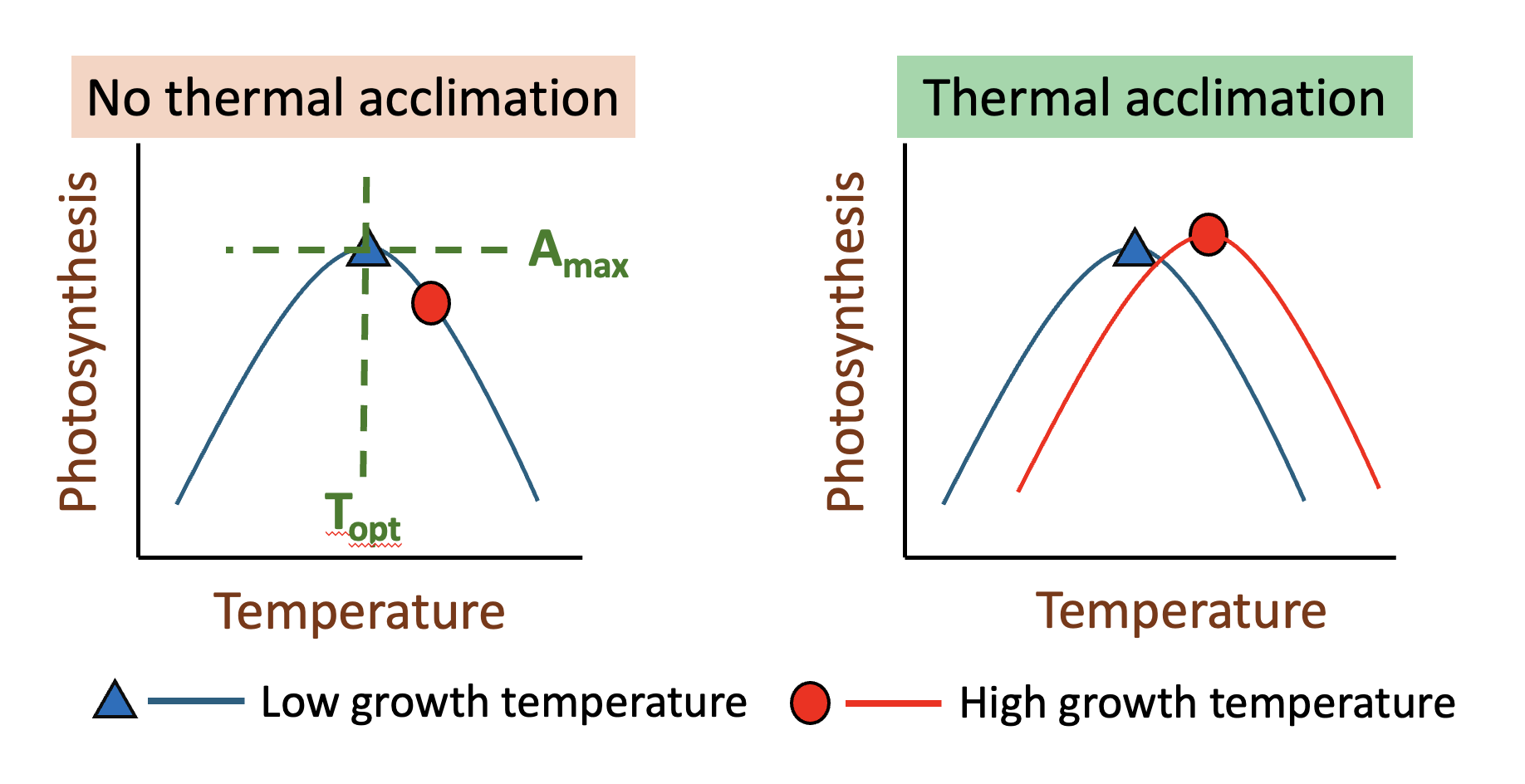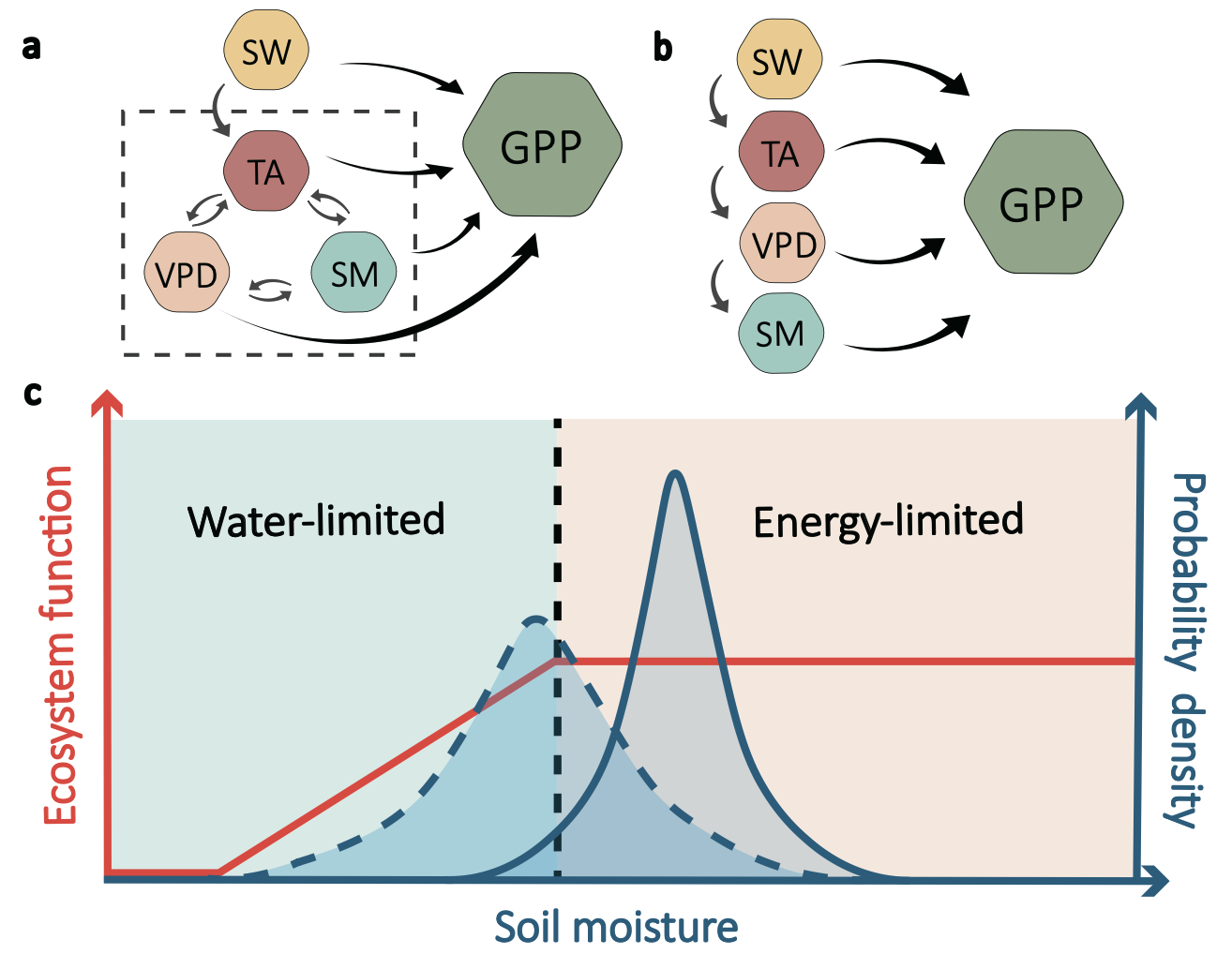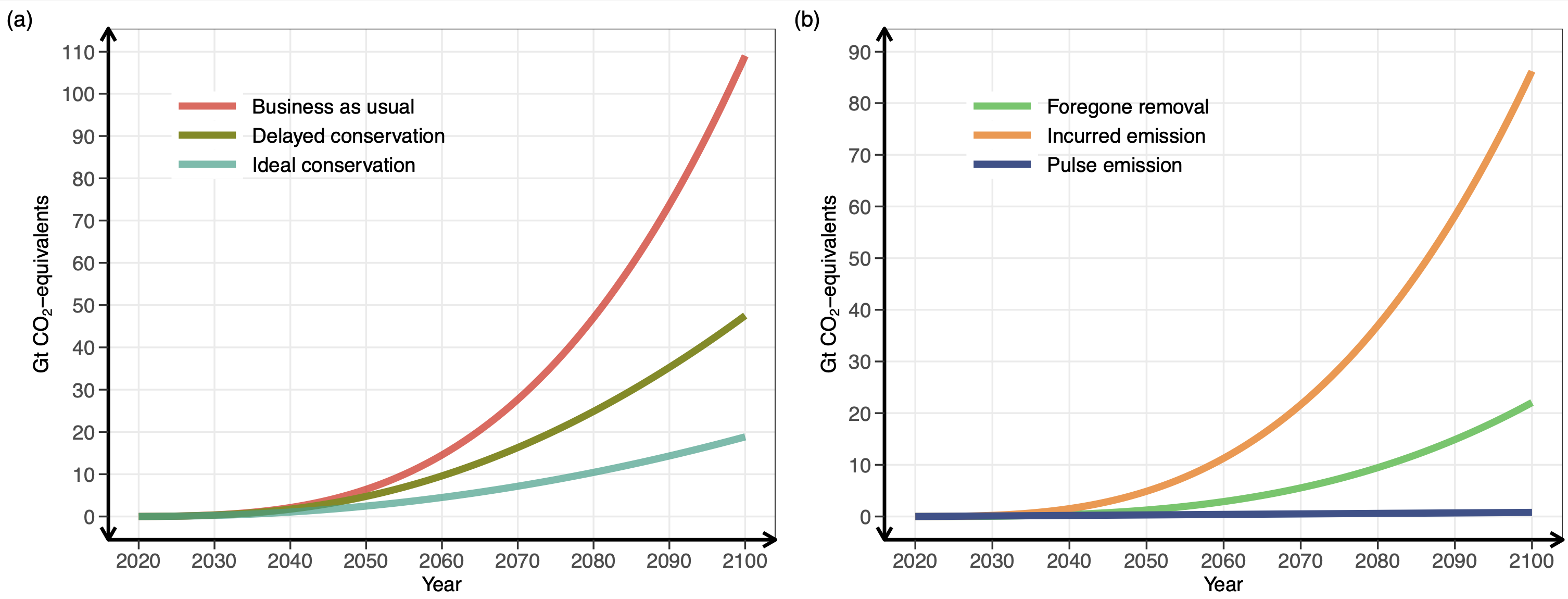Research
"We bridge big data and AI to decode ecosystem-climate feedbacks and deliver actionable solutions for a carbon-neutral future."

Ecosystem acclimation to climate change
Climate change is reshaping ecosystems through rising temperatures, atmospheric aridity, and elevated CO₂ concentrations. Ecosystems can adapt to these shifting conditions over weeks to months—a process known as acclimation—to enhance their functions or mitigate damage. For example, ecosystems acclimate to temperature and radiation to optimize photosynthetic rates. Failure to represent these acclimatory processes in land surface models risks overestimating climate change’s adverse impacts on terrestrial carbon sinks. First-principles theories, such as Eco-Evolutionary Optimality, provide powerful frameworks for modeling these dynamic adjustments mechanistically.
Representative publication: Liu, J., Ryu, Y., Luo, X., Dechant, B., Keenan, T., Gentine, P., Li, B., Li, X., Prentice, C. I., Stocker, B., & Harrison, S. Evidence for widespread thermal acclimation of canopy photosynthesis. (2024). Nature Plants. doi: 10.1038/s41477-024-01846-1.

Ecosystem response to climate extremes
Heatwaves, droughts, floods, and tropical cyclones are intensifying in frequency and magnitude, inflicting severe ecological and socioeconomic consequences. These events often combine multiple stressors (e.g., heatwaves couple extreme temperatures with soil moisture deficits), creating nonlinear impacts on ecosystem functions, including abrupt declines in productivity or widespread mortality. Accurately isolating individual drivers requires disentangling causal relationships among co-varying factors. Non-parametric approaches offer innovative tools to address multicollinearity, nonlinearity and causality in extreme event attribution.
Representative publication: Liu, J., Wang, Q., Zhan, W., Lian, X., & Gentine, P. When and where soil dryness matters to ecosystem photosynthesis. Nature Plants. in press. preprint: 10.21203/rs.3.rs-5147541/v1.

Nature-based climate solutions
Strategic conservation, management, and restoration of ecosystems, known as nature-based climate solutions (NbCS), can amplify carbon sequestration alongside anthropogenic mitigation efforts. Beyond carbon benefits, NbCSs provide various ecological co-benefits. Blue-carbon ecosystems (such as mangroves, salt marshes, and seagrasses) have the highest carbon sequestration rates among natural ecosystems. Yet, 25–50% of blue-carbon ecosystems have been lost during the 20th century, largely due to aquaculture expansion. Emerging evidence reveals that converted aquaculture ponds are hotspots for non-CO₂ greenhouse gases, making blue-carbon conservation one of the most effective NbCS for climate mitigation.
Representative publication: Liu, J., Zhou, Y., Valach, A., Shortt, R., Kasak, K., Rey-Sanchez, C., Hemes, K. S., Baldocchi, D., & Lai, D. Y. F. (2020). Methane emissions reduce the radiative cooling effect of a subtropical estuarine mangrove wetland by half. Global Change Biology, 26(9), 4998–5016. doi: 10.1111/gcb.15247.
